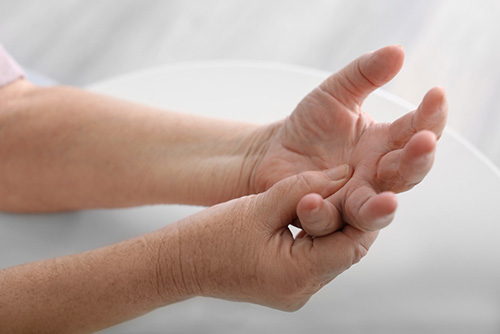
So, what causes trigger finger?
That answer to that question would be inflammation. Trigger finger occurs when the space within the sheath that surrounds the tendon in the affected finger becomes narrower due to inflammation. Tendons exist in each of our fingers (and all over our body, for that matter) and are the fibrous, cord-like material that attaches muscle to bone. Each tendon is covered by a sheath that helps the tendon to glide smoothly upon movement. When that sheath becomes irritated, inflammation is a result. And, if there’s inflammation (swelling) within the sheath, that means there’s less room for the tendon to move freely through the sheath, causing the finger to “catch” or “get stuck.”
Who’s most at risk for developing trigger finger?
Individuals who have jobs (or hobbies) that require the need for repetitive gripping actions are at a higher risk for trigger finger. The condition is more common in females and is a concern for anyone who has diabetes or rheumatoid arthritis. Prolonged irritation of the tendon sheath can cause scarring, thickening, and nodule formation (bumps) that have the ability to hinder the motion of the tendon(s) even more.
What are some of the signs and symptoms of trigger finger?
Signs and symptoms of trigger finger can vary from quite mild to extremely severe and include:
- Finger stiffness, which may be particularly noticeable in the morning hours;
- A feeling or sensation of your finger popping or clicking when you move it;
- Having the affected finger “catch” or “lock” in the bent position and then, suddenly, straighten out;
- A bump on the palm side of the base of the affected finger; and/or,
- Being completely unable to straighten the affected finger.
If trigger finger is something that your primary care provider has diagnosed you with or suspects you have, then your next stop should be to see the orthopaedic surgeons here at Prairie Orthopaedic. There are a variety of treatment options available – in fact, we’ll be going over those in our next blog! But, please know that the pain and stiffness of trigger finger is something that can typically be treated – so, give us a call and schedule your appointment today!

